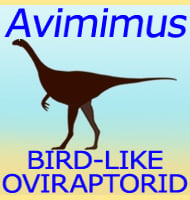Anzu
In Depth The scattered fossils of Anzu were first being found as far back as 1998, and in time four individual discoveries were pieced together to form one oviraptorid. Anzu now has a enough fossils to reveal the skull as well as around seventy-five/eighty per cent of the total post cranial skeleton. This has now … Read more
